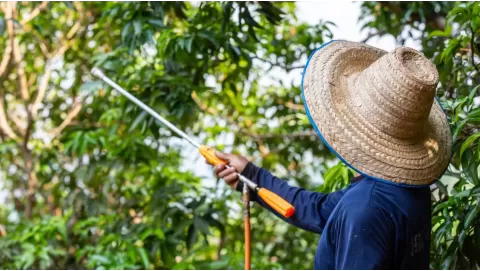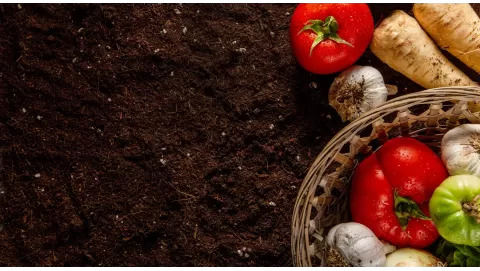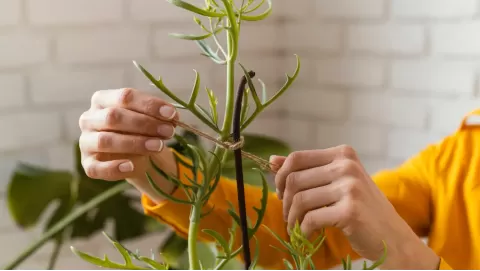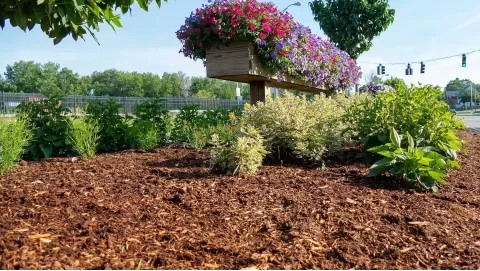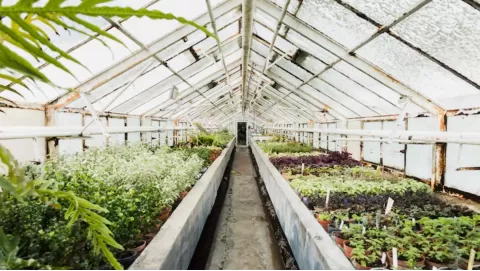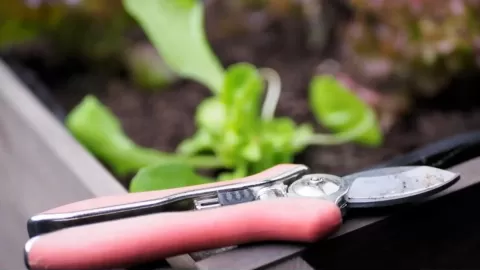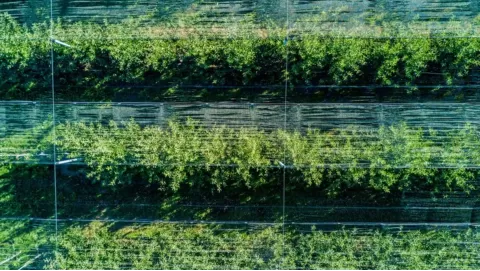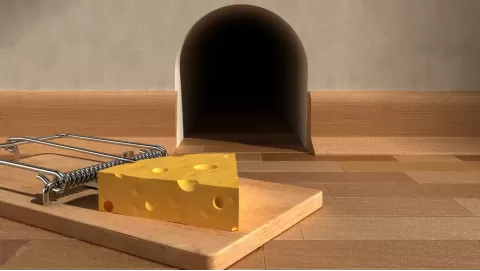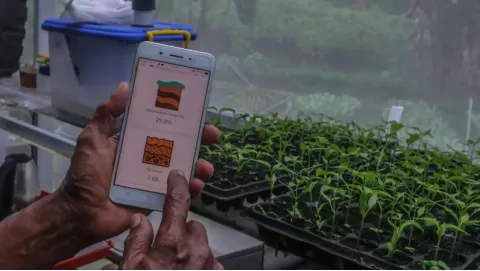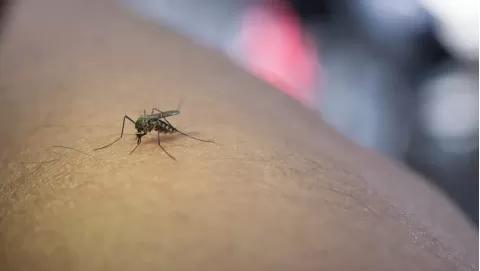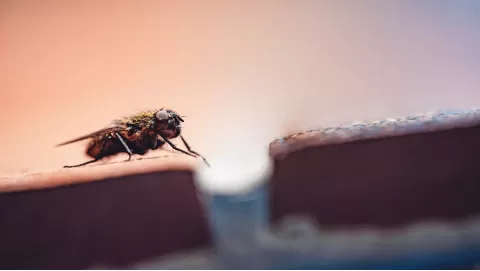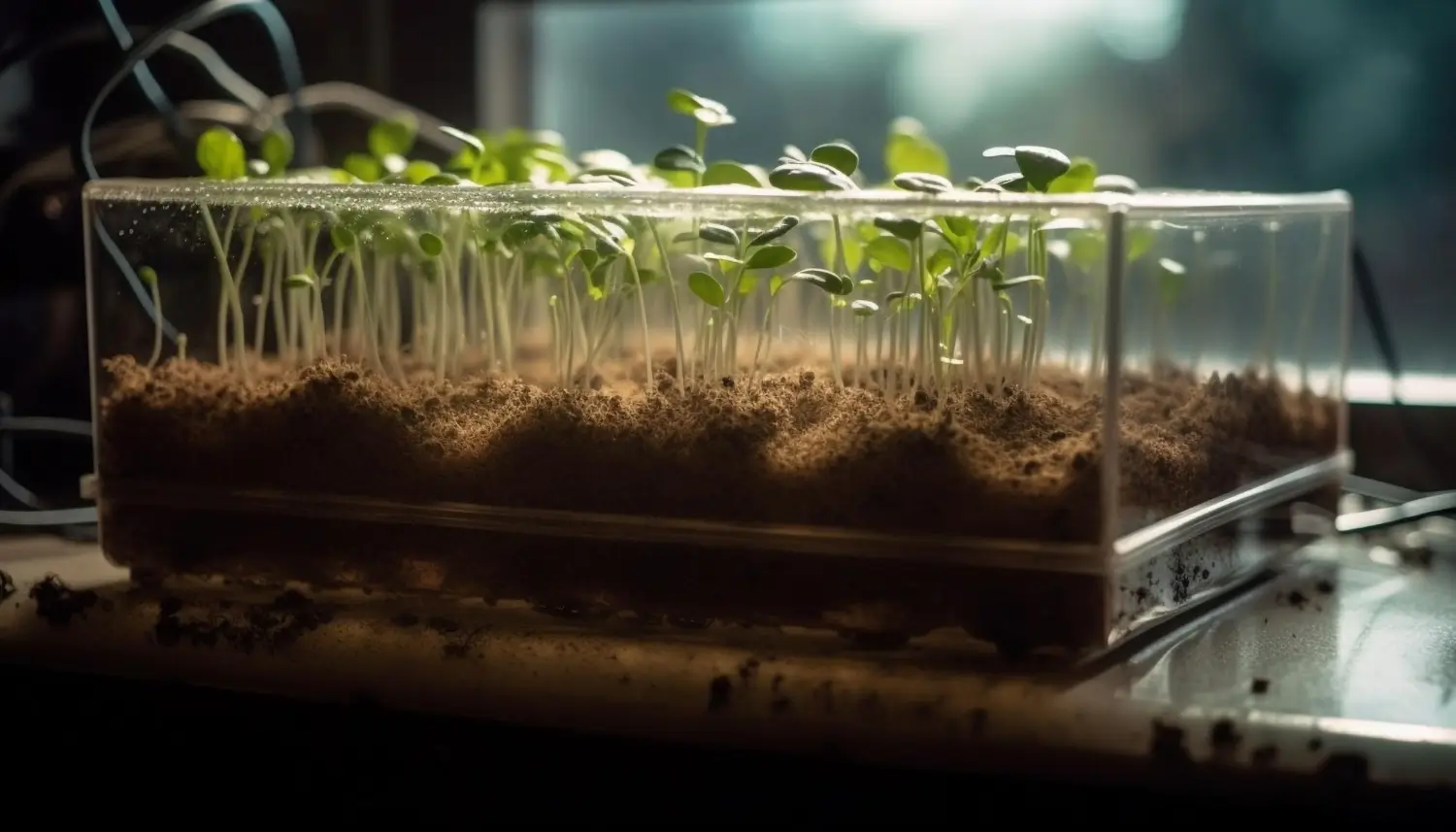
Propagation tips for rare and exotic plants: A specialist’s guide
Rare and exotic plants have a special charm that attracts gardeners, horticulturists, and collectors. Their vibrant flowers or unique leaves seem to hold a secret, drawing attention and sparking curiosity. The appeal of these plants lies not only in their beauty but also in their rarity, making them symbols of elegance and prestige. Whether it is an orchid with delicate petals or a bonsai tree shaped over years of careful pruning, these plants captivate with their grace and mystery.
These plants often require special care, and their limited availability makes them even more valuable. They reflect a passion for preserving nature’s diversity and a desire to share exceptional plants with others. Understanding how to propagate rare and exotic plants is vital for anyone deeply invested in gardening.
Growcycle provides guides on caring for specific plants like the Philodendron Pink Princess, a rare tropical plant known for its striking pink and green variegated leaves.
The Basics of Plant Propagation
Propagation refers to the process of growing new plants from a variety of sources:
- Seeds
- Cuttings
- Other plant parts
Propagation is essential for maintaining plant populations, especially for rare and exotic species. For plants that are hard to find or threatened by environmental changes, propagation ensures that they can continue to exist, thrive, and be shared with others.
Why Propagation Matters for Rare Species
Propagation plays a critical role in conserving rare and exotic plant species. Many of these plants face challenges with natural reproduction. They might require specific conditions to bloom, be vulnerable to habitat loss, or have low natural reproductive rates. Propagation methods help overcome these challenges by creating new plants in controlled environments.
Propagation ensures the survival of rare plants by:
- Conservation: By cultivating rare plants in controlled environments, propagation helps preserve species that are on the brink of extinction, allowing them to thrive in botanical gardens or nurseries and, in some cases, be reintroduced into their natural habitats.
- Genetic Diversity: In endangered species or with few surviving members, sexual propagation can help maintain genetic diversity, making the species stronger and more resilient to diseases and climate change.
- Preserving Endangered Species: Many rare plants grow in specific conditions that are disappearing due to human activity or environmental changes. Propagation techniques enable these species to be preserved and shared for future generations, preventing the loss of unique plant life.
Preparing for Plant Propagation
It is essential to ensure that everything is set up properly before starting the plant propagation process. Preparing for propagation involves assessing the health of the parent plant, gathering the right tools, and creating the ideal environment for the new plants to thrive.
1. Assessing Plant Health
A healthy plant will have the best chance of producing strong offspring. Look for signs of well-being, such as vibrant leaves, strong stems, and active growth. On the other hand, a diseased, stressed, or weak plant may produce poor-quality offspring, or the propagation attempt may fail entirely.
Here are some tips for identifying signs of disease or stress:
- Yellowing or wilting leaves
- Unusual spots, mold, or mildew on leaves and stems
- Stunted growth or irregular flowering
- Damaged or broken stems or roots
- Pests such as aphids or spider mites on the plant
Always inspect the parent plant thoroughly and avoid using plants that show any signs of illness or weakness. Healthy plants are key to successful propagation.
2. Essential Tools and Materials
Here is a list of basic tools and supplies needed for common propagation methods:
- Pruners or Shears: Used for cutting healthy plant parts, like stems or leaves, for propagation.
- Rooting Hormone: A powder or gel that helps encourage root development in cuttings.
- Sterile Cutting Tools: Scalpels or sharp knives should be cleaned or sterilized before use to prevent the introduction of infections to the plant.
- Containers: Pots, trays, or seedling cells to hold the cuttings or seeds during the propagation process.
- Plastic Bags or Covers: Help retain humidity when propagating cuttings or seeds.
- Laminar Flow Hood: A clean environment for tissue culture propagation, preventing contamination by airborne particles.
- Sterile Media, often a gelatinous substance called agar, is a special growing medium for tissue culture that provides a stable platform for plant growth.
- pH Test Kits: Ensure the propagation medium has the right acidity or alkalinity for successful growth.
- Growth Regulators: Chemicals used to control the growth patterns of plants during tissue culture or grafting.
3. Creating the Ideal Environment
The success of plant propagation is heavily influenced by the environment in which it takes place.
- Temperature
Most plants thrive in warm environments, but some, such as certain tropical species, may need higher humidity levels. Temperatures around 65–75°F (18–24°C) are ideal for many plants, but it’s important to research each species' specific needs.
- Humidity
High humidity is crucial for cuttings and seeds, as it helps prevent dehydration. Mist the air around the plants regularly or use humidity trays. Some plants, like orchids, may require constant moisture, while others may prefer drier conditions.
- Light
Most plants require indirect light during propagation, as direct sunlight can stress new cuttings or seedlings. Bright, indirect light is ideal for most species, while some plants may need specialized light conditions.
- Air Circulation
Proper air circulation prevents the growth of fungi or mold, which can harm cuttings and seedlings. To allow for good airflow, make sure the area is well-ventilated and avoid overcrowding plants.
4. Preparing the Propagation Medium
The propagation medium is the environment in which seeds, cuttings, or plant parts will develop. Choosing the right substrate ensures the plants receive the necessary nutrients and support to grow strong roots.
- For most plants, use a well-draining potting mix. This allows excess water to escape while still holding enough moisture for the plant.
- Orchids require specialized substrates such as orchid bark or sphagnum moss, which provide good drainage and support for their unique root systems.
- Bonsai trees need well-draining, specialized soil to retain enough moisture to nourish their roots. A common mix might include akadama, pumice, and lava rock.
- Succulents thrive in very well-draining soil. A mix of sand, perlite, and potting soil is ideal, as it prevents water from sitting around the roots and causing rot.
Adjusting the propagation medium’s mixture or adding specific amendments (like perlite for better drainage or vermiculite for moisture retention) can be the key to success, especially for rare or exotic plants with specific requirements.
Best Propagation Techniques for Rare and Exotic Plants
Here are the various propagation techniques for rare and exotic plants:
A. Sexual Propagation
Sexual propagation involves growing new plants from seeds carrying genetic material from both parent plants.
- Collecting seeds at the right time is essential for optimal germination when propagating rare and exotic plants through seeds. Seeds should be harvested once they have ripened and matured, often indicated by the plant’s natural shedding or drying of seed pods.
- After collection, seeds must be cleaned to remove any remaining fruit, pulp, or debris. This ensures they don’t carry pests or diseases that could affect the seedlings.
- Some seeds may require treatments before sowing, such as soaking in water or applying fungicides to prevent disease.
- For certain species, seeds may also need to be scarified (scratched or nicked) to break through tough seed coats or treated with chemicals to speed up germination.
Sexual propagation through seeds offers genetic diversity, which can strengthen the plant and make it more resistant to diseases or environmental stresses.
One challenge with sexual propagation is the trait variation, which can lead to seedlings that may not match the parent plant. Germinating rare seeds can also be time-consuming and may require specialized care.
B. Asexual Propagation
Asexual propagation is a popular and effective method for reproducing rare and exotic plants, as it allows gardeners to create identical copies of the parent plant. Here are the various asexual propagation methods:
1. Propagation by Cuttings
For stem cuttings, select a healthy section of the stem, typically with a few leaves attached. The cutting should be taken just below a node where roots can form. Using rooting hormones can help speed up root formation. Additionally, placing the cutting in a warm environment, such as on a heating mat, can encourage rooting by providing bottom heat.
For leaf cuttings, the entire leaf or part of it is used to grow a new plant.
Root cuttings involve taking a section of a plant’s root system and replanting it to form a new plant.
2. Layering Techniques
Air layering involves making a small wound on the stem of the parent plant and wrapping it with moist sphagnum moss. The stem is then wrapped in plastic to retain humidity. Once roots have developed in the moss, the section of the stem can be cut off and planted as a new plant.
In ground layering, a stem section is buried in the soil while still attached to the parent plant. Over time, the buried portion will develop roots, and the new plant can be separated from the parent plant.
3. Grafting Methods
Grafting is a technique in which parts from two different plants are joined together to grow as one. It is commonly used for species that do not root well or need additional disease resistance. Grafting is especially useful for fruit trees and plants with specific needs regarding improved disease resistance or faster growth.
- First, select a healthy scion (the part of the plant people want to propagate) and a compatible rootstock (the plant that will provide the roots).
- Prepare the graft by making cuts on both parts and joining them securely.
- After grafting, the joint area should be tightly bound, and the plant should be kept in optimal conditions to promote healing and growth.
4. Advanced Propagation: Tissue Culture & Micropropagation
For those looking to propagate rare and exotic plants on a larger scale, tissue culture, and micropropagation are advanced techniques used in laboratories to produce many identical plants from small tissue samples.
These methods allow for the rapid multiplication of plants and are especially useful for creating disease-free plants, ensuring that the plants are genetically identical to the parent.
Tissue culture requires sterile conditions, specialized equipment (such as laminar flow hoods), and technical expertise to maintain the plants in the culture media. Additionally, this method can be expensive and requires a clean, controlled environment to avoid contamination.
Propagation Examples for Specific Rare and Exotic Plants
Propagating rare and exotic plants requires specialized knowledge and techniques, as each species has its unique set of needs and challenges.
1. Orchids
Orchids are known for their delicate nature and specific needs, which challenge their propagation. One of the most critical requirements for orchids is their relationship with mycorrhizal fungi, which help them absorb nutrients. Without this natural association, many orchids struggle to survive or germinate. Here are the different propagation techniques for orchards:
- Keiki (Baby Plantlets): Some orchids produce small plantlets, or keiki, on their flower spikes. These can be removed and grown into new plants, often without the need for seed germination.
- Division: Established orchid plants can be divided into smaller sections, each with roots and stems, to create new plants.
- Seed Germination on Agar Media: Orchid seeds require a sterile, nutrient-rich medium, typically agar, for germination. The seeds are placed on this medium in a sterile environment to encourage growth, often with the assistance of mycorrhizal fungi.
2. Bonsai
Bonsai propagation requires patience, as it takes time for the tree to develop the desired size, shape, and character while maintaining its overall health. Here are the different propagation techniques for bonsai:
- Cuttings: Rooting stem cuttings is a common method for propagating bonsai. A piece of the plant’s stem is taken and treated with rooting hormones, and the plant is encouraged to root in soil or a suitable propagation medium.
- Grafting: Grafting is used to combine different species or varieties of bonsai plants, allowing for better root systems or unique visual effects.
- Air Layering: This technique involves making a cut on the stem of the parent tree and wrapping the wounded section with moss to encourage root development, which can then be separated and planted as a new bonsai.
3. Succulents and Cacti (Rare Varieties)
Many rare succulents and cacti can be propagated through cuttings from leaves or stems. To ensure successful rooting, it is important to allow the cuttings to be callous over before planting them in well-draining soil. This prevents rot and ensures that the cutting can take up water without becoming waterlogged.
Post-Propagation Care and Nurturing
After successfully propagating rare and exotic plants, the next critical phase is post-propagation care. This phase involves ensuring the new plants transition smoothly, establish healthy growth, and thrive over time.
Transitioning to Growth
Once the propagated plants have rooted or established themselves, they need to move from the controlled environment of the propagation setup to their permanent home.
- Moving plants outdoors is essential to gradually acclimatizing them to outdoor conditions. This "hardening off" process involves slowly increasing their exposure to sunlight, wind, and temperature fluctuations over several days or weeks.
- Indoor plants should be placed in a location with indirect light, ensuring they are away from drafts and extreme temperature changes. Monitor their response to the new environment before moving them to their final position.
Establishing a Routine
Establishing a proper watering, feeding, and acclimatization routine is important for promoting healthy growth.
- Watering: Different plants have different watering needs, but a general rule is to ensure the soil or medium is moist but not waterlogged. Establish a routine based on the specific plant’s requirements, whether that means watering deeply or only when the soil is dry.
- Feeding: Newly propagated plants need nutrients to support their growth. Begin feeding them with a diluted, balanced fertilizer once they have established roots, gradually increasing the concentration as the plants grow.
- Acclimatization: Gradually introduce new care routines, including temperature and humidity control, to allow the plants to adapt without stress.
Monitoring Progress
It is essential to regularly monitor the plants’ progress to ensure they are growing healthy and strong. Look for signs of robust growth, such as new leaves, stems, or roots.
- Key signs of healthy growth include vibrant leaves, strong root systems, and overall vigorous plant development.
- If the plant shows signs of stress, such as yellowing leaves, stunted growth, or wilting, it may be time to adjust care routines. This could mean changing watering schedules, providing more or less light, or modifying the temperature and humidity levels.
Long-Term Maintenance
- Pruning: Regular pruning helps shape the plant, encourages healthy branching, and removes dead or damaged foliage. For bonsai or orchids, pruning is essential for maintaining their form.
- Repotting: As plants grow, they may outgrow their containers and require repotting. Make sure to choose a pot that’s slightly larger than the current one, and ensure the soil or substrate is fresh and well-draining to support root development.
- Ongoing Support: Even after initial success, plants will need continued care. Monitor their growth, adjust their environment as needed, and ensure they receive the proper nutrients and conditions to thrive long-term.
FAQs
What makes rare and exotic plants so valuable?
Their unique beauty, vibrant colors, unusual forms, and limited availability make them highly sought after. They symbolize prestige and elegance.
Why is propagation important for rare plant species?
Propagation ensures the survival of rare plants, preserves genetic diversity and helps overcome challenges like habitat loss or low reproductive rates.
How can I care for newly propagated rare plants?
Gradually transition them to their permanent environment, ensuring proper light, water, and acclimatization to encourage healthy growth.
The Bottom Line
Rare and exotic plants are valued for their unique beauty and rarity. They play an important role in keeping nature diverse. Using the right propagation techniques can save and protect these plants for future generations.
Propagating rare plants requires careful planning, the right tools, and a good environment for growth. After propagation, it is important to care for the plants to help them grow healthy and strong. Gardeners and horticulturists can help protect rare and exotic plants by exploring the Growcycle learning center.
Disclaimer: This material is for informational purposes only and should not be relied on for legal, medical, financial, or any other form of professional advice.


